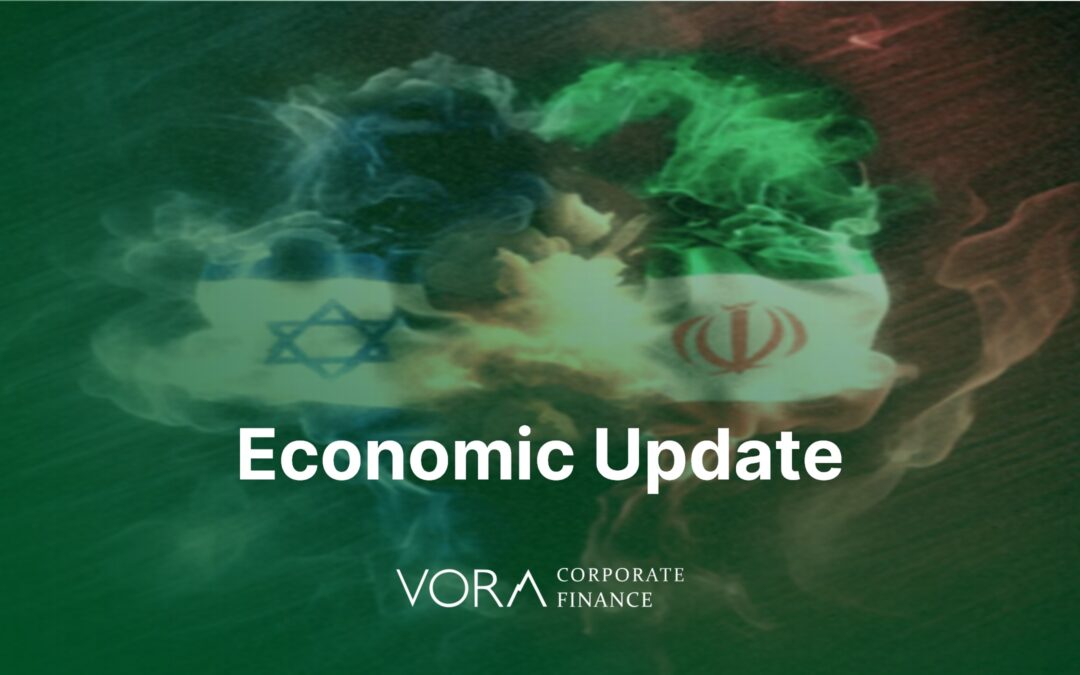Global Economic Impact of the Middle East War
The armed conflict between Iran and Israel, which erupted on 13 June 2025, triggered immediate and far-reaching disruptions across global energy markets and macroeconomic stability. As two of the most strategically positioned and militarily powerful states in the Middle East, their escalation heightened concerns over the security of key trade and energy corridors. Brent crude prices rose by 8% to $75 per barrel, with analysts warning of potential spikes to $130–150 per barrel in the event of a prolonged conflict or closure of the Strait of Hormuz. This key waterway channels 20% of the world’s oil and nearly 25% of global LNG supplies.
Global inflation risks have intensified. A $10 per barrel increase in oil prices is expected to reduce global GDP growth by 0.8 percentage points and push up consumer inflation by 0.5 points. Freight and insurance costs have also surged due to elevated risk premiums in the region. Stock markets across the US, Europe, and Asia witnessed broad declines, while safe-haven assets such as gold—now trading above $3,400/oz—have seen sharp inflows.
The U.S. economy, already burdened by $37 trillion in national debt, faces renewed recession risks. Rising energy prices, trade tensions with China, and potential Fed rate hikes could further destabilize its recovery.
Implications for the Indian Economy:
India, which imports over 85% of its crude oil and nearly 50% of its LNG from the Middle East, faced pronounced macroeconomic stress due to the conflict. A $10 increase in crude prices could:
- Reduce real GDP growth by 0.3 percentage points
- Increase CPI inflation by 0.4 percentage points
- Widen the current account deficit by 0.2–0.4% of GDP
- Push the rupee below Rs. 86/USD due to increased dollar demand
Retail inflation, which had eased to 2.82% in May 2025, is now at risk of reversal. The Reserve Bank of India’s recent 50 bps rate cut may be short-lived if inflation trends worsen. Shares of domestic oil companies (e.g., ONGC, Oil India) have risen by 3%, anticipating price hikes.
Acknowledgements:
RBI Bulletin (www.bulletin.rbi.org.in), SEBI (www.sebi.gov.in), NSE (www.nseindia.com), BSE (www.bseindia.com)
Disclaimer:
This material has been prepared by the personnel in Vora Corporate Finance which is Investment Banking arm of Vora Management Consultancy Private Limited and looks after Mergers & Acquisitions (M&A), Private Equity (PE), Fund Raising, Debt syndication and Valuations and is based out of Ahmedabad, Gujarat, India. Any views or opinions expressed herein are solely that of individual authors and may differ from view of Vora Management Consultancy Private Limited. This material is proprietary to Vora Management Consultancy Private Limited and is for your personal use only. Any distribution, copy, reprints or forward to others is strictly prohibited.
This material captures the information based on information available in the public domain, public announcements and sources believed to be reliable. Analysis contained herein is based on publicly available information and appropriate assumptions. This material is intended merely to highlight market developments and is not intended to be comprehensive and does not constitute strategic, investment, legal or tax advice. In no event Vora Management Consultancy Private Limited be liable for any use by any party or for any decision made or action taken by any party in reliance upon, or for any inaccuracies or errors in, or omissions from, the information contained herein and such information may not be relied upon by you for evaluating any transaction.

